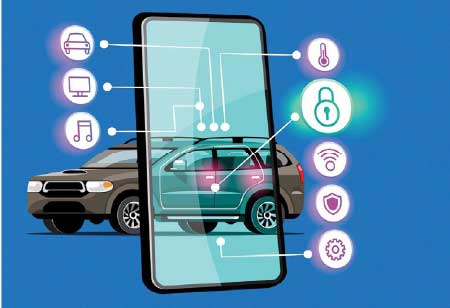THANK YOU FOR SUBSCRIBING
THANK YOU FOR SUBSCRIBING
Be first to read the latest tech news, Industry Leader's Insights, and CIO interviews of medium and large enterprises exclusively from Auto Tech Outlook

By
Auto Tech Outlook | Tuesday, March 18, 2025
Stay ahead of the industry with exclusive feature stories on the top companies, expert insights and the latest news delivered straight to your inbox. Subscribe today.
Ongoing innovation and vigilance will be essential to protecting vehicle occupants and the broader transportation ecosystem.
FREMONT, CA: The automotive industry is rapidly developing due to advancements in technology, connectivity, and automation, which bring opportunities and challenges regarding cybersecurity and safety. As modern vehicles integrate more sophisticated electronics, software, and network connectivity, they become increasingly vulnerable to cyber threats while also enabling the development of new safety features. Advanced encryption, multi-factor authentication, and secure updates are essential to protect critical processes and prevent unauthorized access. The current focus is strengthening encryption methods, authentication protocols, and intrusion detection systems to secure communications.
Over-the-air updates allow manufacturers to remotely update vehicle software and firmware, ensuring that security patches and new features are promptly deployed. The trend is gaining traction as it provides a convenient, cost-effective way to address vulnerabilities and enhance vehicle performance. AI and ML play a significant role in automotive cybersecurity and safety. AI is integral to developing advanced driver-assistance systems and autonomous driving technologies, enhancing collision avoidance, lane-keeping, and adaptive cruise control. The systems monitor network traffic and vehicle data for signs of malicious activity or anomalies that could indicate a cyberattack.
Manufacturers can enhance the overall resilience of their vehicles against cyber threats. Secure hardware and trusted execution environments are becoming increasingly important. They provide a safe area within the central processor where sensitive operations and data can be isolated from the rest of the system. The separation helps protect critical functions, such as cryptographic key management and secure boot processes, from potential threats. The trend towards integrating and securing hardware components ensures that essential security functions remain protected even if a vehicle’s software is compromised. A multi-layered security approach, often called defense-in-depth, is increasingly being adopted in the automotive industry.
The strategy involves implementing multiple security measures across different vehicle components and systems. These layers can include secure communication protocols, encryption, authentication, access control, and continuous monitoring. Creating multiple barriers reduces the risk of a successful cyberattack. The comprehensive approach ensures that even if one layer is breached, others remain intact to protect the vehicle's critical systems. Industry-wide collaboration and standardization are crucial for addressing cybersecurity and safety challenges in the automotive sector. The collaborative efforts help create a unified front against cyber threats and promote adopting best practices.
Organizations facilitate the sharing of threat intelligence and best practices among manufacturers, suppliers, and other stakeholders. The automotive cybersecurity and safety trends highlight the industry's proactive efforts to address emerging challenges and harness new technologies. The trends shape a safer and more secure future for connected and autonomous vehicles, from enhancing communication security and leveraging AI to implementing multi-layered security approaches and promoting industry collaboration.
 Copyright © 2025 AutoTech Outlook. All Rights Reserved | Privacy Policy | Subscribe | Sitemap | About us | Feedback Policy | Editorial Policy
Copyright © 2025 AutoTech Outlook. All Rights Reserved | Privacy Policy | Subscribe | Sitemap | About us | Feedback Policy | Editorial Policy 



